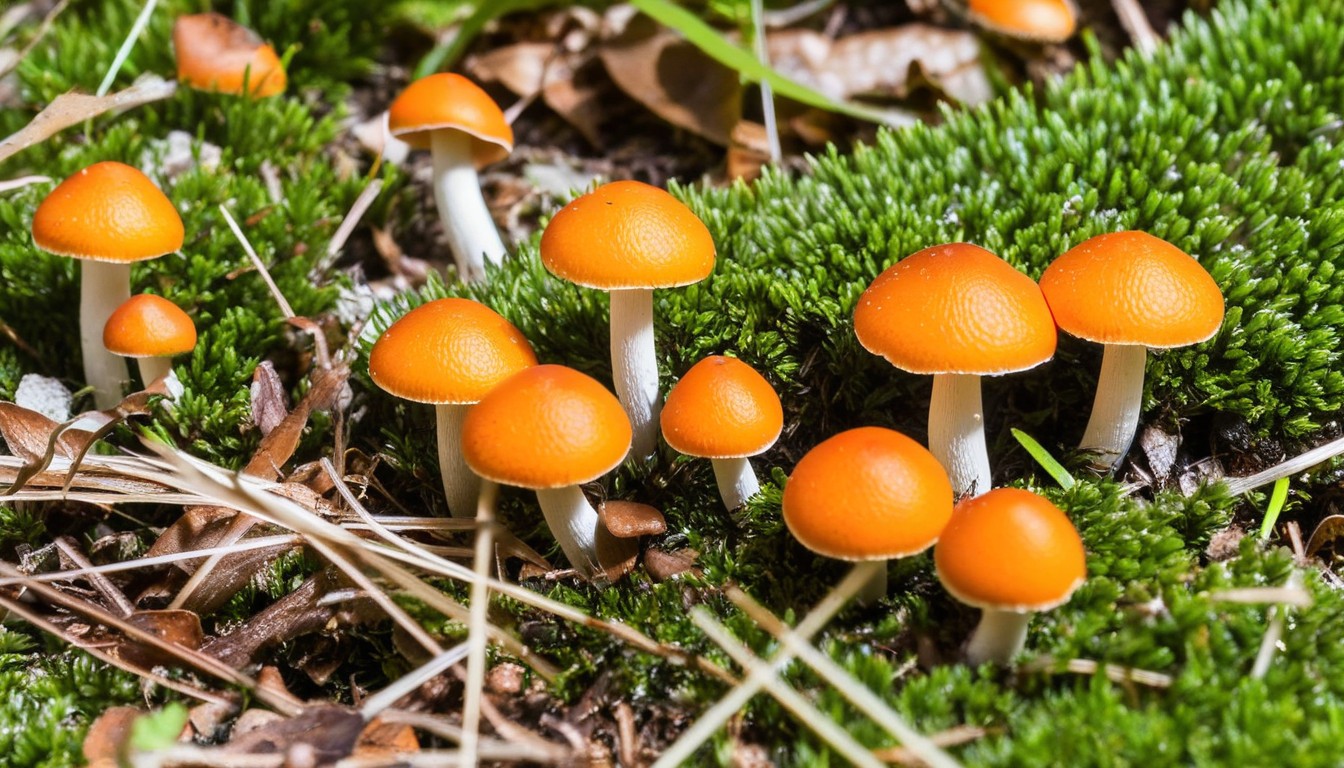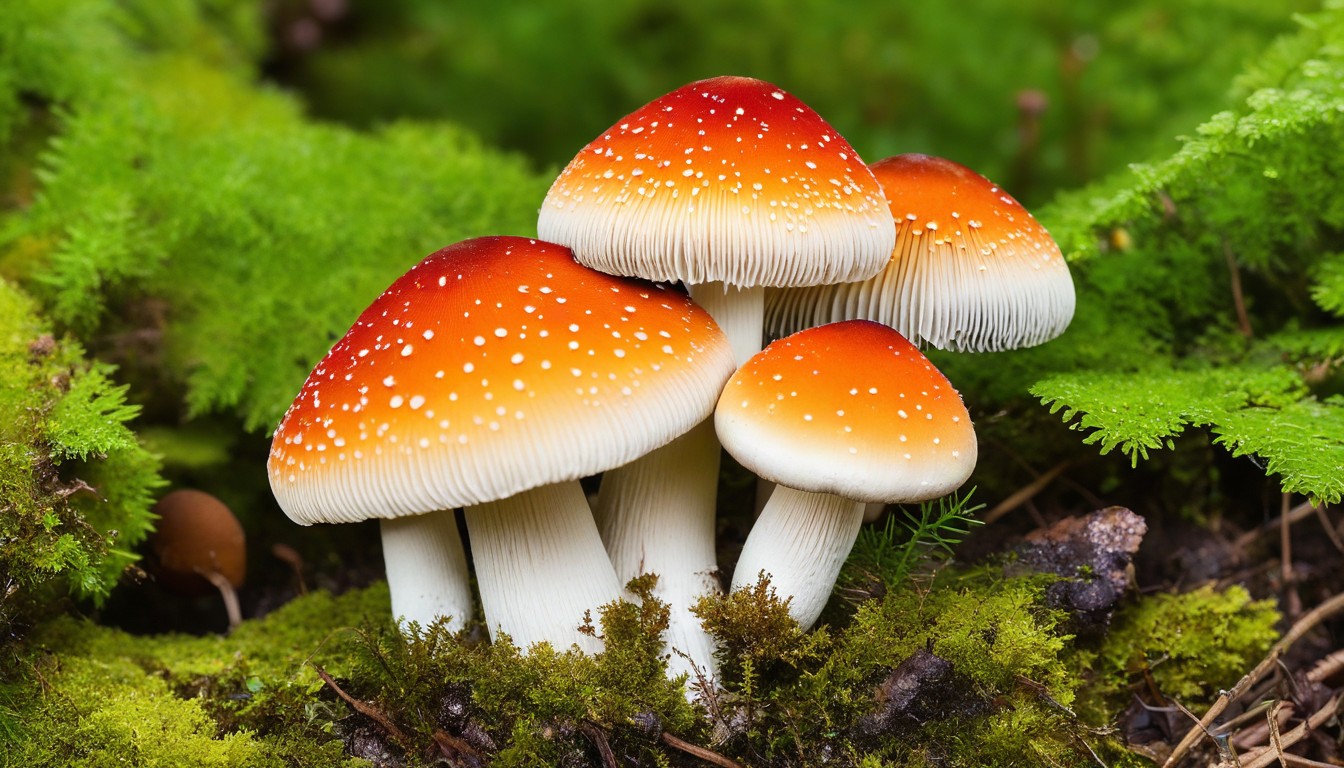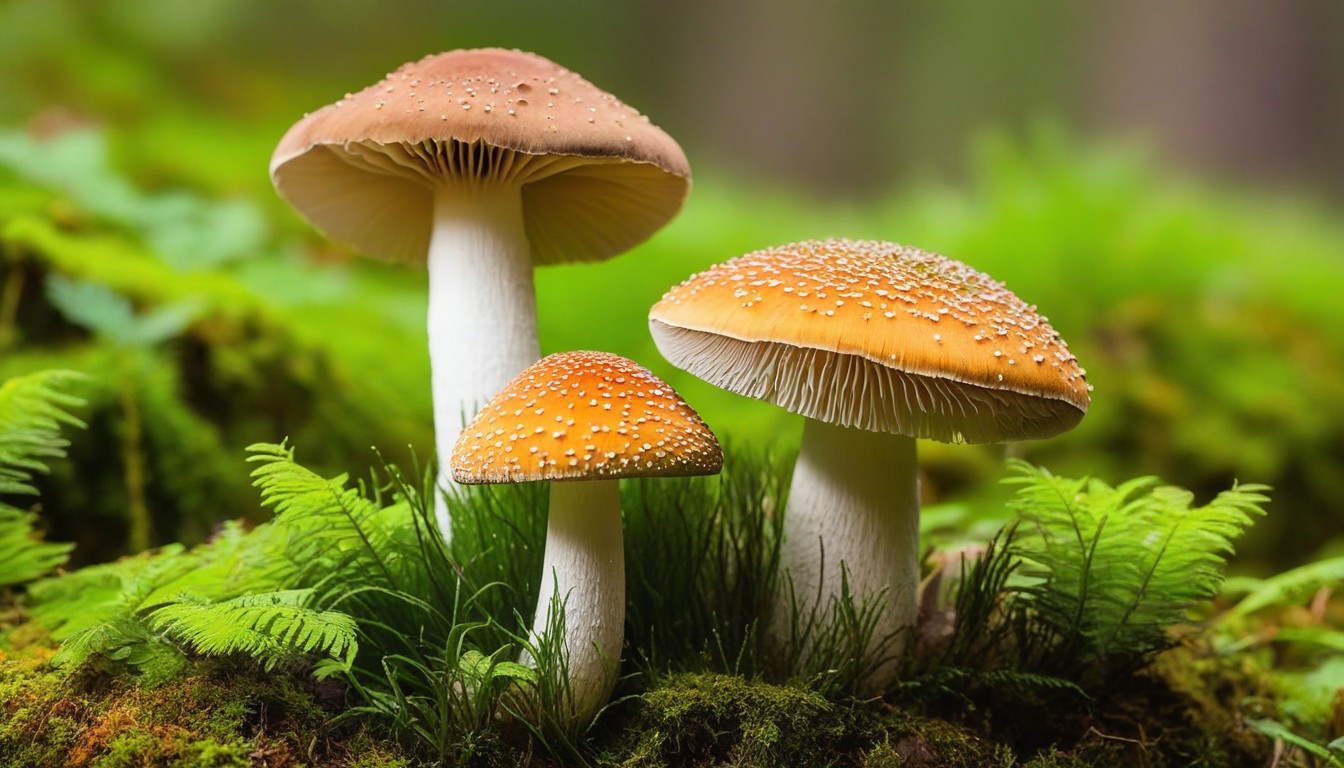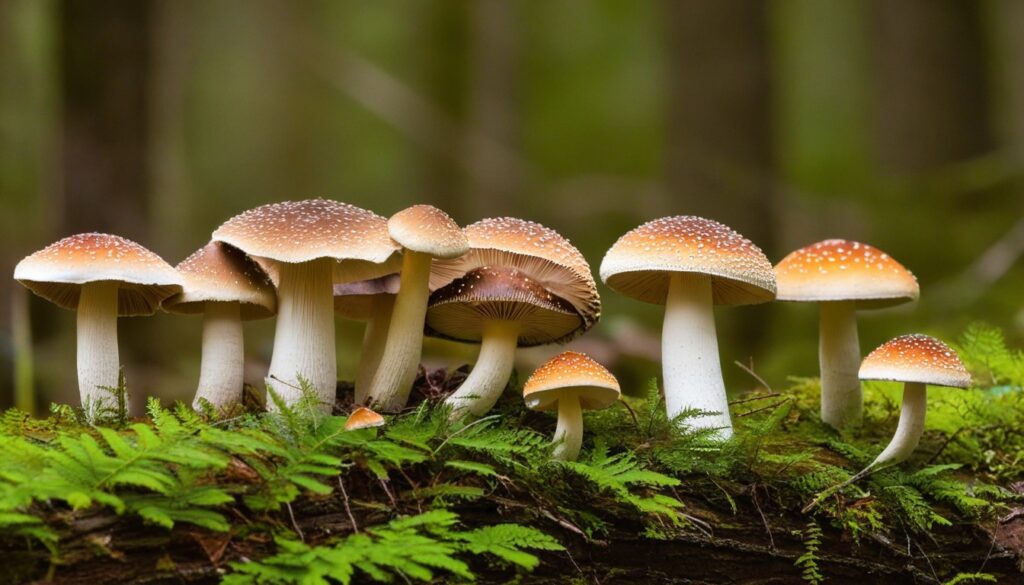Utah is home to a diverse range of mushrooms, each with unique characteristics and uses. From edible to medicinal, and even rare and unique mushrooms, there’s so much to explore in the world of mycology in Utah. In this article, we’ll provide you with a comprehensive list of mushrooms found in Utah, along with identification tips and important safety precautions to take when foraging.
Key Takeaways:
- Utah is home to a diverse range of mushrooms.
- This article will provide a comprehensive list of mushrooms found in Utah.
- Identification tips and safety precautions will also be discussed.
- Explore the enchanting world of mycology in Utah.
- From edible to rare and unique mushrooms, discover a fascinating realm of fungi.
Understanding Mushrooms in Utah
Utah is home to a diverse range of mushrooms that can be found in various habitats, including forests, meadows, and wetlands. Understanding the characteristics of these mushrooms is essential for identifying them correctly and avoiding any potential health risks.
One of the key features of mushrooms is their fruiting body, which is the visible part that emerges from the ground. These fruiting bodies can take on a variety of shapes and sizes, from the classic umbrella-shaped cap and stem to more unusual forms like brackets and cups.
In addition to their physical appearance, mushrooms can also be distinguished by the type of spores they produce, which are the reproductive cells that they release into the air. Spore prints can be created by placing a mushroom cap on a piece of paper, leaving it overnight, and observing the color of the spores that have fallen onto the paper.
Another important factor for understanding mushrooms in Utah is knowing which habitats they are commonly found in. For example, many edible mushrooms grow near trees, while others thrive in the decaying remains of plants. Some mushrooms, like the rare and unusual truffles, grow underground and require special techniques for identification and harvesting.
Mushroom Identification Resources
For those interested in learning more about mushroom identification in Utah, there are many resources available. The Utah Valley Mycological Society provides information on local mushroom species and hosts events like foraging hunts and mushroom cultivation workshops. Additionally, the Utah State University Extension offers online resources and educational materials for identifying and using mushrooms.
Mycology is a fascinating field that allows us to explore the hidden world of fungi and their important roles in our ecosystem. By understanding mushrooms in Utah, we can appreciate the diversity of these organisms and the intricate web of relationships that they form in our natural world.”
Edible Mushrooms in Utah
If you’re a mushroom hunter or forager, you’re probably interested in the edible mushrooms that you can find in Utah. Here are some of the most common edible mushrooms found in Utah:
|
Mushroom Name |
Flavor Profile |
Habitat |
Season |
|---|---|---|---|
|
Morel |
Earthy, nutty |
Deciduous forests, burnt areas |
Spring |
|
Chanterelle |
Peppery, fruity |
Coniferous and deciduous forests |
Summer and fall |
|
Puffball |
Mild |
Fields and meadows |
Summer to fall |
|
Hedgehog |
Peppery, sweet |
Coniferous forests |
Summer to fall |
It’s essential to be cautious when foraging for edible mushrooms. Remember that some poisonous mushrooms can look very similar to edible ones. Make sure that you’re confident in your identification skills before consuming any mushroom. Additionally, don’t forget to follow the best practices for sustainable and responsible mushroom foraging that we’ll discuss in the conservation section below.
“Mushrooms are like little sponges; they take up whatever is in the soil around them.” – Paul Stamets
Keep in mind that some mushrooms can take up toxins from the soil around them. Be cautious if you’re foraging in areas that could be contaminated with heavy metals, pesticides, or other harmful substances. Always cook your mushrooms thoroughly before consuming, as this can destroy any potential toxins present.
When cooking with mushrooms, there are many delicious recipes to try. Sautéed mushrooms can be a simple but delicious side dish, or you can incorporate them into a hearty mushroom risotto or soup. Remember that each type of mushroom has its own unique flavor profile, so experiment with different recipes to find your favorites.
Poisonous Mushrooms in Utah

While foraging for mushrooms in Utah, it’s crucial to be aware of the toxic varieties that can cause serious health repercussions. Here are a few types of poisonous mushrooms to keep an eye out for:
|
Mushroom Name |
Description |
Location |
|---|---|---|
|
Amanita muscaria |
Characterized by a red cap with white spots and a ring on the stem, this mushroom is highly toxic and can cause severe hallucinations, delirium, and nausea. |
Found in forests, often near birch or pine trees. |
|
Conocybe filaris |
This small, brown mushroom is often mistaken for edible varieties. However, it contains a potent toxin that can cause liver and kidney damage. |
Commonly found in lawns and other grassy areas. |
|
Galerina marginata |
Similar in appearance to edible mushrooms, this variety contains a deadly toxin that attacks the liver. Symptoms of poisoning include abdominal pain, vomiting, and yellowing of the skin. |
Found in wooded areas and near rotting logs. |
If you suspect you have ingested a poisonous mushroom, seek medical attention immediately. Do not induce vomiting unless instructed to do so by a healthcare professional.
It’s important to thoroughly research and study mushroom identification before embarking on a foraging expedition in Utah. Never eat a mushroom unless you are 100% certain of its identification and safety.
Medicinal Mushrooms in Utah

Mushrooms are not just a tasty addition to your meal; they also have potential medicinal benefits. In Utah, you can find many mushrooms with unique healing properties.
One of the most well-known medicinal mushrooms is the Reishi mushroom. It has been used for centuries in traditional Chinese medicine to treat a range of conditions, including fatigue and high blood pressure. Studies have shown that the Reishi mushroom has anti-inflammatory and antioxidant properties.
Another popular medicinal mushroom is the Turkey Tail mushroom. This mushroom is rich in polysaccharides, which have been shown to have immune-boosting effects. It is also being studied for its potential anti-cancer properties.
If you’re looking for a natural way to reduce stress and anxiety, then the Lion’s Mane mushroom may be worth exploring. This mushroom contains compounds that have been shown to reduce inflammation and promote the growth of nerve cells in the brain, which can improve cognitive function.
Other medicinal mushrooms found in Utah include the Chaga mushroom, which has high amounts of antioxidants, and the Cordyceps mushroom, which is known for its potential energy-boosting and anti-inflammatory effects.
The Potential Benefits of Medicinal Mushrooms
The potential benefits of medicinal mushrooms are vast and diverse. Some of the most notable potential benefits include:
- Boosting the immune system
- Reducing inflammation
- Promoting cognitive function
- Anti-cancer properties
- Reducing stress and anxiety
- Anti-aging effects
How to Incorporate Medicinal Mushrooms into Your Wellness Routine
There are many ways to incorporate medicinal mushrooms into your wellness routine. One of the most popular methods is to consume them in supplement form. You can find a variety of mushroom supplements online or at your local health food store.
You can also incorporate mushrooms into your diet by adding them to soups, stews, and other dishes. However, it’s important to note that not all mushrooms are edible or safe to consume. Make sure you properly identify any wild mushrooms before consuming them.
Final Thoughts
Medicinal mushrooms offer a natural way to promote health and wellness. Whether you’re interested in boosting your immune system, reducing inflammation, or improving cognitive function, there are many mushrooms with unique properties to explore in Utah. Just make sure to properly identify any wild mushrooms before consuming them or using them for medicinal purposes.
Rare and Unique Mushrooms in Utah

Utah’s diverse landscape is home to a variety of rare and unique mushrooms. Let’s take a closer look at some of the most fascinating species you can find in the state.
Morel Mushrooms
Morel mushrooms are one of the most coveted finds in Utah’s forests during the spring. These cone-shaped mushrooms have a distinctive, honeycomb-like cap and a nutty, earthy flavor. Morels are highly sought after by chefs and mushroom enthusiasts due to their elusive nature and delightful culinary properties.
Lion’s Mane Mushrooms
Lion’s Mane mushrooms are a fascinating species that can be found throughout Utah’s forests. These striking mushrooms have long, cascading tendrils that resemble a lion’s mane, hence their name. Lion’s Mane mushrooms have a delicate, seafood-like flavor and are often used as a meat substitute in vegetarian dishes.
Cauliflower Mushrooms
Cauliflower mushrooms can be found in Utah’s damp, mossy forests during the fall months. These unique mushrooms have a creamy, white-colored cap that resembles a head of cauliflower. They have a mildly sweet flavor and can be used in a variety of dishes, including stir-fries and soups.
Indian Pipe Mushrooms
Indian Pipe mushrooms are a rare and unique species found in Utah’s higher elevation forests. These mushrooms have a ghostly appearance, with white, waxy caps that resemble a smoking pipe. Indian Pipe mushrooms have no chlorophyll and do not rely on sunlight for energy, instead, they parasitize on the roots of nearby trees.
Tips for Mushroom Identification in Utah
Identifying mushrooms can be a challenging task, but with the right knowledge and tools, it becomes easier. In Utah, there are many different types of mushrooms which can all look quite similar. Here are some useful tips to help you identify the mushrooms you find:
1. Use multiple identification sources
When identifying mushrooms, it’s important to use multiple sources to make sure you have correctly identified the mushroom. Websites, field guides, and mycology experts can all be great resources for mushroom identification.
2. Take detailed notes and photos
When you find a mushroom, take detailed notes on its size, color, texture, and any other distinguishing features. Taking clear photos from multiple angles can also be helpful.
3. Pay attention to the habitat
Where a mushroom is found can also provide clues to its identification. Some mushrooms are only found in certain environments, such as forests or grasslands.
4. Use all your senses (carefully)
When identifying mushrooms, all your senses can be useful. Look closely at the mushroom’s cap, gills, and stem. Smell the mushroom, but be careful not to inhale any spores. You can even taste a small part of the mushroom (if you’re sure it’s not poisonous), as some mushrooms have distinct flavors.
5. Learn to identify the most common toxic mushrooms
It’s important to know how to identify the most common toxic mushrooms found in Utah to avoid any potential health risks. Some of the most dangerous mushrooms in Utah include the death cap and the destroying angel.
By following these tips and continuing to learn about mushrooms in Utah, you can safely identify and appreciate the diverse range of fungi found in the state.
Conservation of Utah’s Mushrooms

Mushrooms are vital components of Utah’s ecosystems, performing crucial roles such as aiding the decomposition of organic materials, cycling nutrients, and supporting the growth of surrounding plants. However, the increasing popularity of mushroom foraging has resulted in the depletion of fungal populations and the destruction of their habitats.
It’s important to understand the significance of conserving these natural resources, ensuring their sustainability for future generations. Responsible foraging practices can help protect Utah’s mushroom ecosystems while allowing us to enjoy their benefits.
Here are a few tips for conserving Utah’s mushrooms:
- Know your mushrooms: Before foraging, ensure that you are familiar with the different species and their habitats.
- Take only what you need: Harvest only the amount of mushrooms required, leaving the rest for others and wildlife.
- Be mindful of the environment: Avoid damaging the surrounding ecosystem when searching for mushrooms, and always leave the area as you found it.
- Follow regulations: Check for any regulations or restrictions regarding mushroom foraging in specific areas, and follow them.
- Join a local mycological society: Connect with like-minded individuals who share an interest in mushrooms and their conservation.
By implementing these practices, we can ensure the preservation of Utah’s mushrooms for years to come, allowing us to continue exploring and enjoying the wonders of the mushroom kingdom.
Conclusion
Thank you for joining us on this exciting journey through the world of Utah mushrooms! We hope you’ve enjoyed discovering the diverse array of mushrooms found in this beautiful state. By now, you have a solid understanding of the characteristics, habitats, and uses of various mushroom species in Utah.
If you’re a beginner, we encourage you to continue learning and exploring. For those who are experienced foragers, we hope this article has provided you with new insights and inspiration. Remember, always take proper precautions when foraging for mushrooms, and consult with experts if you have any doubts before eating them.
Happy Mushroom Hunting!
Now that you know how to identify and appreciate the mushrooms in Utah’s vast forests, go out and enjoy the beautiful scenery while hunting for these fascinating fungi. Remember to leave the environment as you found it and to respect and appreciate nature’s bounty. Together, let’s preserve these unique and valuable resources for generations to come.
FAQ
Can I eat any mushroom I find in Utah?
No, not all mushrooms in Utah are safe to eat. It’s important to be able to properly identify edible mushrooms and avoid consuming any poisonous varieties. Make sure to do thorough research and consult with experienced foragers or mycologists before consuming any wild mushrooms.
Are there any mushrooms in Utah with medicinal properties?
Yes, there are several mushrooms in Utah that have potential medicinal properties. Some commonly known medicinal mushrooms include Reishi, Chaga, and Turkey Tail. These mushrooms have been traditionally used for their immune-boosting and antioxidant properties. However, it’s important to consult with a healthcare professional before incorporating any new supplements into your routine.
What are some common signs of poisonous mushrooms in Utah?
Some common signs of poisonous mushrooms include brightly colored caps, a distinctive smell, or the presence of a ring or skirt on the stem. However, it’s important to remember that mushroom identification can be complex, and it’s always best to err on the side of caution. If you’re unsure about the safety of a mushroom, it’s best to leave it untouched.
Can I sell mushrooms that I forage in Utah?
Selling wild mushrooms in Utah is subject to specific regulations. It’s important to familiarize yourself with the state’s laws and obtain any necessary permits or licenses before selling mushrooms. Selling wild mushrooms without the proper permissions can result in legal consequences.
Are there any rare or unique mushrooms found in Utah?
Yes, Utah is home to several rare and unique mushrooms. Some examples include the Trembling Giant (Armillaria ostoyae), often considered the largest living organism in the world, and the Devil’s Urn (Urnula craterium), a distinctive cup-shaped fungus. Exploring the forests of Utah may reveal even more fascinating and rare mushroom species.

